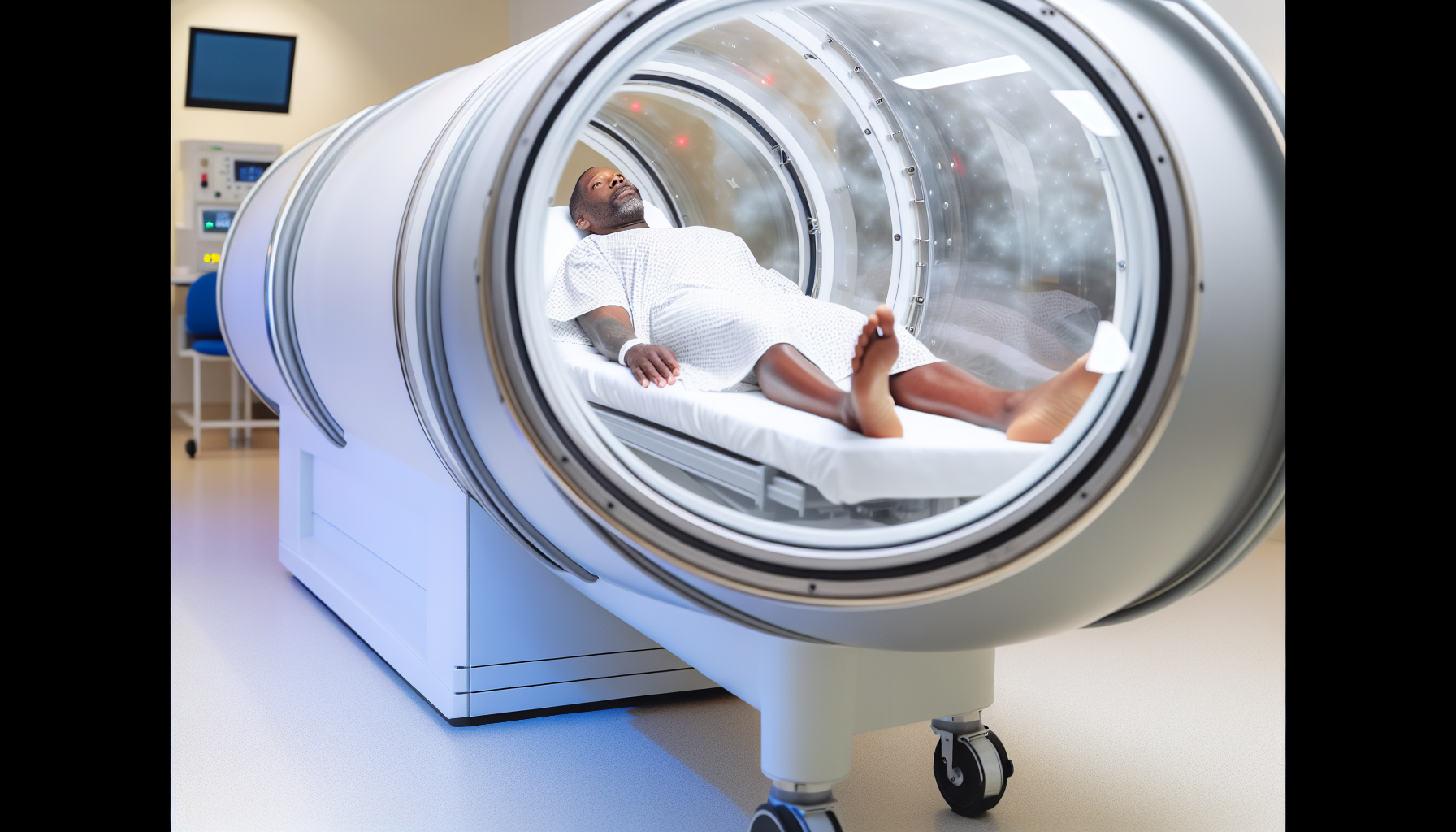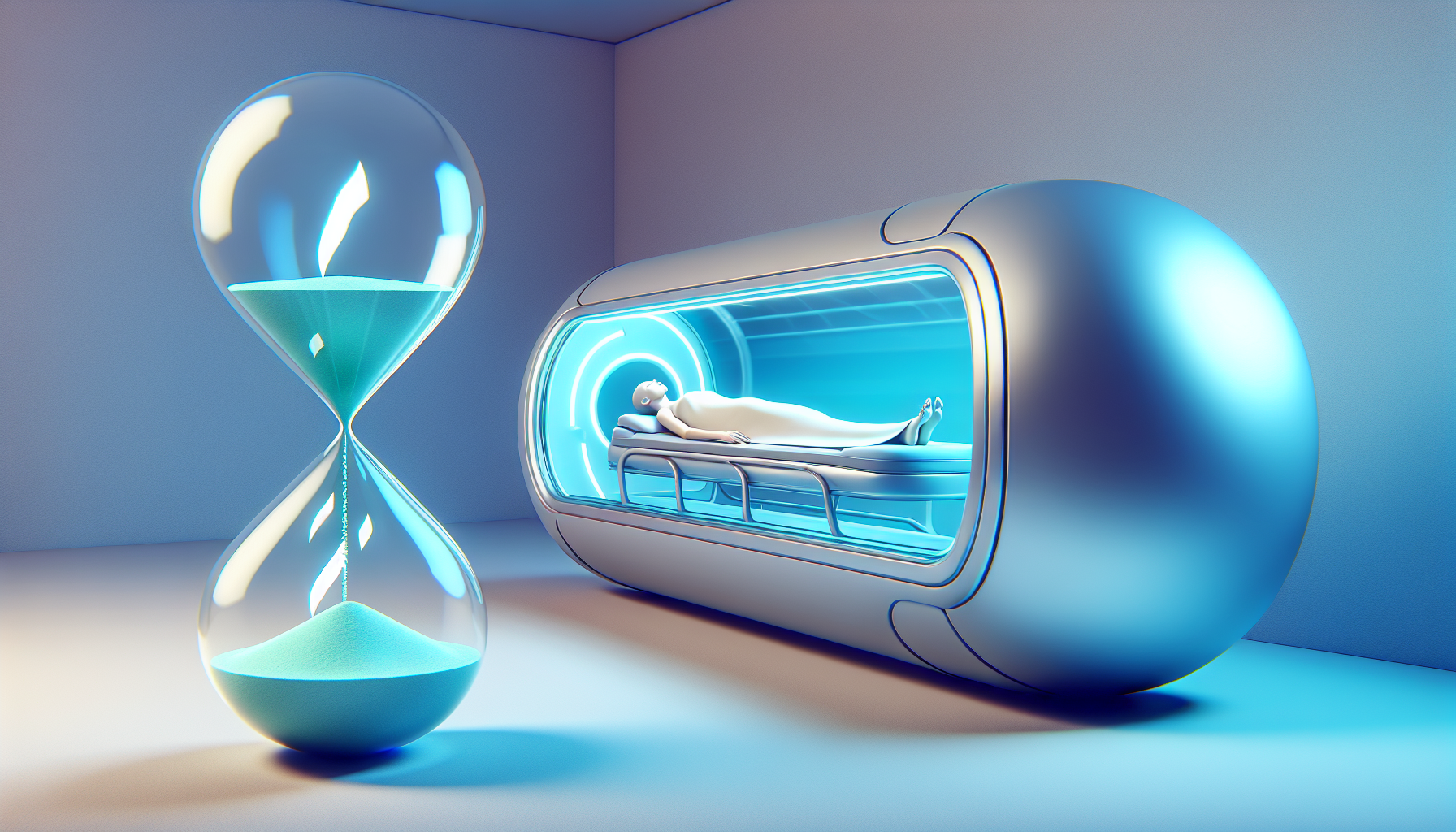Optimizing Wellness: Determining How Often Should You Do Hyperbaric Oxygen Therapy
Determining “how often should you do hyperbaric oxygen therapy” depends on individual health needs and goals. This article will delve into the factors that shape your personal treatment frequency, from the nature of your condition to the expertise of your medical team. Avoiding one-size-fits-all answers, we offer insights that help you understand the reasoning behind varied treatment schedules and how they might apply to you when considering how often you should do hyperbaric oxygen therapy.
Key Takeaways
-
Hyperbaric oxygen therapy (HBOT) is a non-invasive treatment that enhances healing and supports immune function by using high-pressure, oxygen-rich environments to increase the oxygen-carrying capacity of the blood.
-
The frequency of HBOT sessions is customized to each individual based on various factors including their specific wellness need, treatment goals, and healthcare provider recommendations; conditions may require a range of treatments from as few as three sessions to over 90.
-
HBOT schedules are individual-specific and can include daily, weekly, or intermittent scheduling; these are determined by the desired outcomes, and enhancing factors like anti-aging or athletic performance.
Understanding Hyperbaric Oxygen Therapy
 Hyperbaric oxygen therapy, a remarkable technology falling under the category of undersea and hyperbaric medicine, is revolutionizing healing and recovery in the modern age. Utilizing increased pressure levels while breathing concentrated doses of oxygen, this non-invasive treatment promotes healing processes, reduces inflammation, and improves overall well-being. This specialized therapy takes place within a pressurized environment known as a hyperbaric chamber or hyperbaric oxygen therapy chamber.
Hyperbaric oxygen therapy, a remarkable technology falling under the category of undersea and hyperbaric medicine, is revolutionizing healing and recovery in the modern age. Utilizing increased pressure levels while breathing concentrated doses of oxygen, this non-invasive treatment promotes healing processes, reduces inflammation, and improves overall well-being. This specialized therapy takes place within a pressurized environment known as a hyperbaric chamber or hyperbaric oxygen therapy chamber.
But how does this above sea level pressure atmosphere with higher amounts of life-sustaining gas facilitate healing? By increasing blood vessel capacity for carrying oxygen throughout the body to normalize tissue levels that aid cellular energy production. Based on Henry’s Law principles, it provides epigenetic effects towards reducing bodily inflammation while enhancing mitochondrial functions—the latter process is especially dependent upon new blood vessels forming.
Moreover, hyperbaric oxygen therapy not only helps promote general health, but also aids in fighting off diseases. It decreases bacteria’s potency when infecting other organisms while bolstering their immune systems through breathing pure unadulterated air containing increased volumes of oxygen. This has been found particularly effective against common infections.
Factors Influencing Treatment Frequency
The frequency of oxygen therapy sessions in hyperbaric chambers is not standardized, but rather tailored to each individual's needs. Key factors taken into consideration include the medical condition or wellness benefit being targeted and treatment goals. Recommendations from healthcare professionals and the hyperbaric medical society are also considered when determining the optimal number of treatments.
The specific number of visits required can vary greatly depending on the treatment goal. While some conditions may only require three sessions for successful management, others could necessitate 90 or more trips inside pressure-controlled chamber environments where patients receive high levels concentrated pure oxygen doses.
Common Treatment Schedules
The frequency of hyperbaric oxygen therapy varies according to the individual needs and response of each patient. Depending on their goal, some individuals may receive daily, weekly or intermittent treatments using a block scheduling approach.
Each treatment schedule is tailored specifically for the individual's goals in order to maximize the effectiveness of hyperbaric oxygen therapy. This means that all necessary information and important factors will be taken into consideration when determining how often they should undergo this type of oxygen therapy.
Daily Treatments

Daily hyperbaric oxygen therapy is the most commonly studied frequency. Recommended for several conditions such as decompression sickness, carbon monoxide poisoning, Lyme disease, and diabetic wounds as well as most wellness goals such as neuro plasticity, collegian production, telomere lengthening, etc. The main benefits of these frequent sessions include increased blood’s capacity to carry oxygen, better blood flow, reduced inflammation and swelling, and eradication of anaerobic bacteria. These effects expedite recovery for infections and open wounds.
The reason behind administering daily treatments of hyperbarics entails its potent healing abilities. As part of the process, oxygen therapy works by enhancing oxygen carrying capacity, improving circulation, fighting against swelling and soreness, and diminishing the presence of bacteria, which results in an acceleration of the oxygen-carrying process. This makes it necessary to treat various conditions with multiple sessions of treatment on a daily basis.
Moreover, daily treatment with this form of oxygen therapy can lead to positive outcomes for age-related changes such as improved skin appearance, reduced senescent cells, increased elasticity of fibers and stability, higher collagen density, and the formation of new blood vessels.
The typical protocol involves six treatments per week as this frequency has proven to yield the best outcomes for a majority of desired outcomes.
Intermittent Treatments
Hyperbaric oxygen therapy has shown promise in its effects and athletic performance.
For athletes seeking a competitive advantage, intermittent use of hyperbaric oxygen therapy may enhance their physical abilities by increasing tissue delivery of vital oxygen molecules while also boosting aerobic capacity and endurance levels. These benefits are achieved through stimulation of antioxidant activity within the body, an essential factor in counteracting oxidative stress associated with both aging processes and physical exertion. This heightened antioxidant response plays a critical role not only in improving overall performance but also supporting natural anti-aging mechanisms.
Timing these sessions around the training season can help enhance the athletes performance.
Weekly Treatments
While some individuals may benefit most from daily treatment, a weekly treatment schedule can also prove to be an effective approach, especially as a maintenance dose.
The duration of the typical weekly hyperbaric oxygen therapy ranges between one and two hours, based on individual needs and response to the treatment.
Weekly hyperbaric oxygen therapy has potential benefits such as increasing blood oxygen levels, promoting healing, improving tissue function and circulation while reducing inflammation and swelling. It helps combat bacteria, which aids in wound healing.
Duration of Hyperbaric Oxygen Therapy Sessions

The length of each oxygen therapy session is crucial, as important as its frequency and scheduling. Typically lasting around two hours or between 60 to 120 minutes, hyperbaric oxygen therapy sessions are tailored to meet the specific goals of the individual. The duration depends on various factors such as age, overall health status and desired outcome.
Individual circumstances can also affect how long a patient’s hyperbaric oxygen therapy session may last due to different treatment requirements for certain conditions. While some cases may require immediate intensive sessions, others might benefit from longer durations for gradual improvement in their well-being.
Long-term Effects and Maintenance Therapy
The immediate effects of hyperbaric oxygen therapy, which include a temporary increase in energy levels, enhanced cognitive function, and relaxation, are certainly appealing. It is the long-term impact of this treatment that truly makes a difference.
Over time, hyperbaric oxygen therapy accumulates therapeutic benefits and can lead to more noticeable and lasting results when used consistently. Depending on the individual patient’s needs.
The long-term effects may vary - while some might experience immediate improvements, others may require ongoing treatments to maintain progress over an extended period.
In summary, hyperbaric oxygen therapy has been shown to provide significant benefits beyond just short-term relief. With repeated sessions, this form of therapy has demonstrated potential for improving overall health in various ways. However, the extent and duration of these outcomes may differ from person-to-person, and maintenance treatments may be necessary for sustained effectiveness in certain cases. Thus, it is important to continue exploring and researching these promising methods as they could potentially bring about life-changing changes over an extended period through targeted use of treatments involving oxygen.
Summary
To sum up, hyperbaric oxygen therapy is a potent and non-invasive treatment that utilizes heightened pressure and increased levels of oxygen to facilitate healing, decrease inflammation, and enhance overall health. The frequency, timing, and duration of these treatments are tailored to fit the individual’s specific needs and conditions. With various scheduling options such as daily or weekly sessions being utilized. This therapy yields positive results both immediately after treatment as well as in the long term for a range of health issues while also promoting general wellbeing.

Frequently Asked Questions
How long does it take to see results from hyperbaric oxygen therapy?
The outcome of oxygen therapy at a pressure above sea level, also known as hyperbaric oxygen therapy, can differ among individuals. While some may notice immediate effects, others might not experience any improvement until several days or even weeks into their treatment plan.
How many HBOT treatments are needed?
Oxygen therapy in a hyperbaric chamber usually requires at least 20 sessions for most conditions, with the initial two weeks being crucial for triggering the body’s natural healing processes. More commonly, HBOT research shows the best results after 90 daily sessions. The number of required treatments varies based on each person’s specific condition and their individual response to oxygen therapy within this specialized environment.
What is the success rate of hyperbaric oxygen therapy?
The success rate of hyperbaric oxygen therapy is between 85 to 95 percent for patients who complete the recommended treatment. It is an evidence-based treatment shown to heal wounds, infections, and late effects of radiation.
How often should you do hyperbaric oxygen therapy for anti aging?
For the purpose of reducing signs of aging, it is advised to undergo at least 60 sessions daily sessions of hyperbaric oxygen therapy at an average duration of one hour per week followed by maintenance sessions 1-3 times a week.
Can you do hyperbaric oxygen every day?
Yes, most individuals benefit from undergoing daily sessions of hyperbaric oxygen therapy in the beginning followed by some sort of intermittent maintenance protocol.





